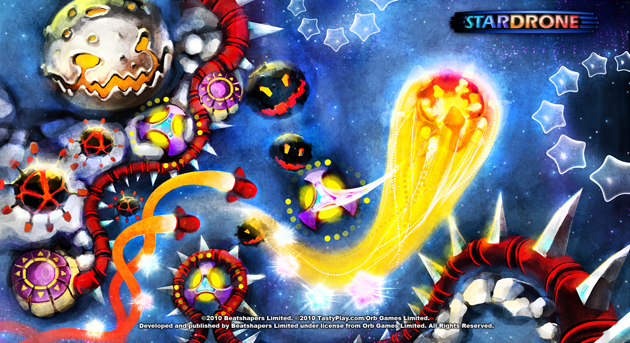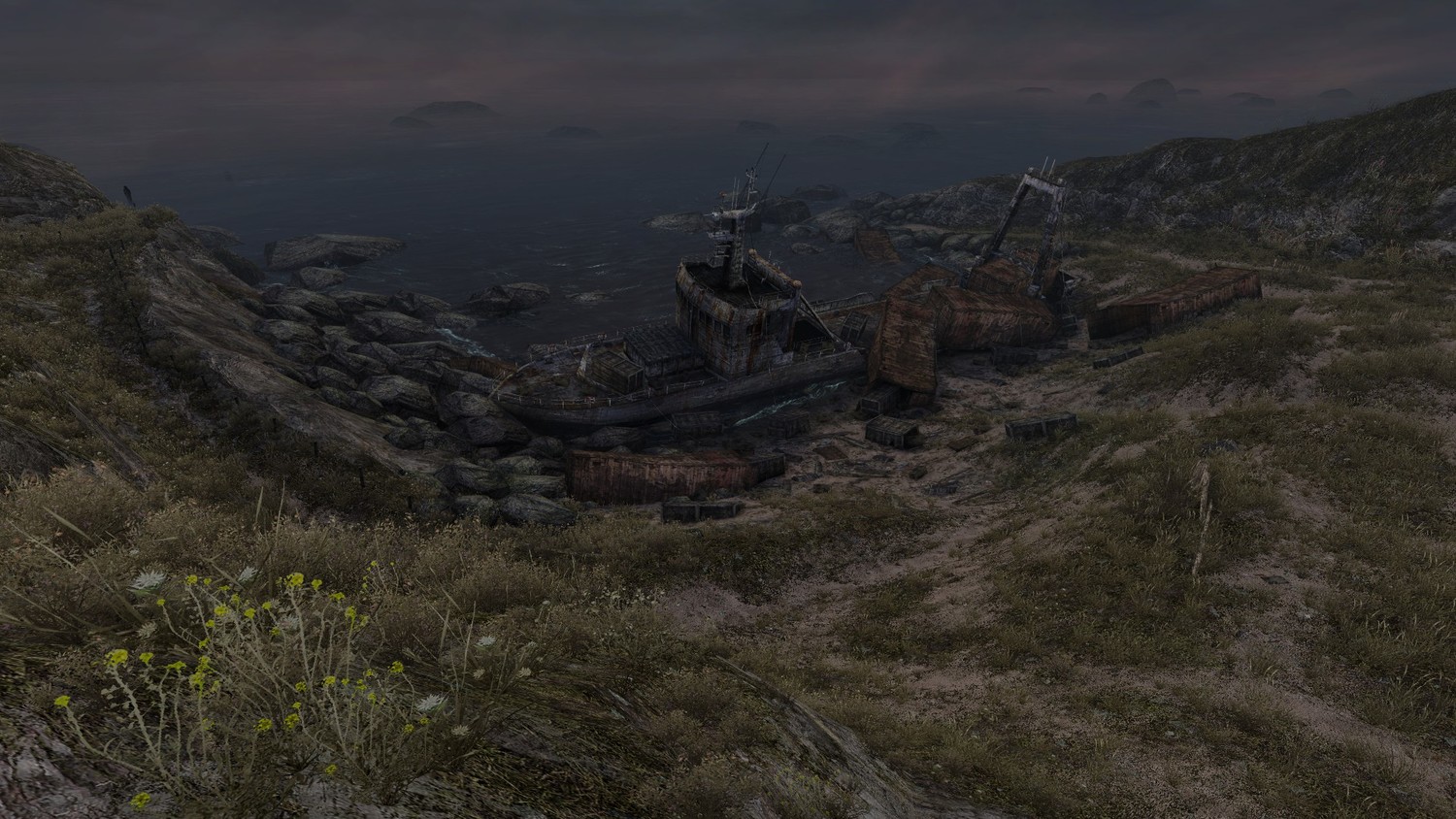
Review: StarDrone
Posted by Eric G on March 30th, 2011 | 3 Comments | Tags: StarDrone
Beatshapers’s long-anticipated Move title StarDrone released earlier this month on the European PlayStation Network. It’s coming soon to the North American store, which is a very good thing. If you’re longing for a reason to dust off your PlayStation Move controllers, StarDrone may be just that. The game’s core mechanic is grappling onto beacons to swing your drone around a stage, lighting up stars or collecting shards and transporting them to a fixed location. There’s a fair amount of space out there to be charted, and it’s filled with techno music, enemies, and other environmental hazards. So, would you like to swing on a star?
I’m thinking yes. Yes you would. Until Brad told me different a few hours ago, I thought StarDrone was a Move-only game. The fact that you can also play it with a DualShock controller makes it more accessible to those who don’t have cameras and/or Move controllers, which is nice. I played through the entire game with a Move controller and had no trouble with it whatsoever. As a matter of fact, the Move controls are extremely precise. The initial calibration is a breeze and the option to recalibrate is available in most menus. Each level starts by aiming and shooting a drone out of a cannon. The drone stays in motion from this point on, and it’s your job to point and click on nearby beacons to navigate its flight path. While tethered to a beacon, a dotted line shows the trajectory of your drone and another line shows its potential path if you were to let go. You then have to fulfill the objective of whichever level you’re on. The first few levels will ask you to light up all the stars, which means floating your drone over all of the star icons on screen. Lighting up stars in quick succession leads to combos, which obviously means more points. Stars also fill up a meter at the top of your screen that, when full, transforms your drone into a comet that can bust through enemies and crystals. Other objectives include collecting shards and carrying them to a fixed location, and making your way to the GOAL! circle with as many points and in as little time as possible.
There are 53 levels in total, each with a unique map layout. There’s a minimap in the bottom-left corner of your screen to help you find where stars and shards are, and you have the ability to freeze the game and freelook around at any time by holding the trigger button. The minimap is especially useful in later levels, as the maps get increasingly larger and much more intricate than the first ten or so levels. There are usually a few different paths to go in order to meet your goal. Later on, enemies such as slow-moving creepers, stationary mines, star-consuming vibemasters, and one-hit-kill spikes test your ability to safely swing around space. The missions switch up enough to ensure against a stale experience, but you’d be hard-pressed to beat the entire game in one play session. I often found myself playing through ten or so levels at a time, then taking a bit of a break from the game. It’s not that I got bored of StarDrone while playing it. To the contrary, I enjoyed the game the entire time I played it. However, the later missions will see you flinging into spikes and creepers quite often, meaning you’ll be replaying the same level up to ten times before completing it. What’s nice about StarDrone, though, is that the levels can be completed very quickly. This means that even if you’ve spent a couple of minutes on a level only to die near the end, you’ve only lost a couple of minutes of time. It makes the game a lot more replayable, since, upon death, you’ll likely feel the need to retry the stage overrule the need to ragequit. What also makes the game replayable is its medal system.
Beating a level doesn’t necessarily reward you with a medal. If you meet certain target times, though, you can obtain either a bronze, silver, or gold medal. The target time for the next medal is shown after you complete a stage, something that led to me retrying levels quite a bit. At first I wondered how it was even possible to meet some of the gold medal target times. Then I found the “Game Speed” option in the menus. Turning up the game speed increases the rate at which your drone zips about without making the time fly by faster. A solid knowledge of the level layout accompanied by quick reflexes will net you many a gold medal. I have yet to obtain one on each level, but I did go back a few times to increase my score/medal count. Another replayability booster is online leaderboards. StarDrone supports a total score leaderboard that can be accessed from the main menu as well as level-specific scoreboards. Your top ten friends’ scores are displayed in a box to the left of the main level screen.
The projected trajectory lines are a hugely helpful touch that takes the guesswork out of grappling at high speeds. They make the game more playable without making it less difficult. The later levels will be tough enough to warrant several plays but enjoyable enough to not cause you to break your Move controller. The only gripe I have with the game is the sluggish menu navigation whilst using the Move controller. It’s the same basic controls as navigating the XMB, but a whole lot slower. You can only scroll through about five levels at a time by holding the trigger and swiping downward. That means you’ll be swiping ten times to get to the bottom few levels; weak. The rest of the game is great, though, with enough content to justify its price. While the DualShock controls are competent, the best way to experience StarDrone is with the PS Move. If you’ve got one, pick it up and get to grapplin’. I’ll be looking for you on the leaderboards.
The game releases April 5th in North America.
If you’d like to see more, let me know and I’ll capture some gameplay.
A copy of this game was provided by the publisher for review purposes. For more info on our review policy click here. This review is for the PlayStation 3 version of the game.
General Info
- Developer: Beatshapers Ltd., Orb Games Ltd.
- Publisher: Beatshapers Ltd.
- Release Date: April 2011, March 2011
Score:
What I Like:
- Great push-n-press Move controls
- Leaderboards
- Intricate, varied level design
- Different level objectives
What I Dislike:
- Menu navigation with the Move controller is sluggish




